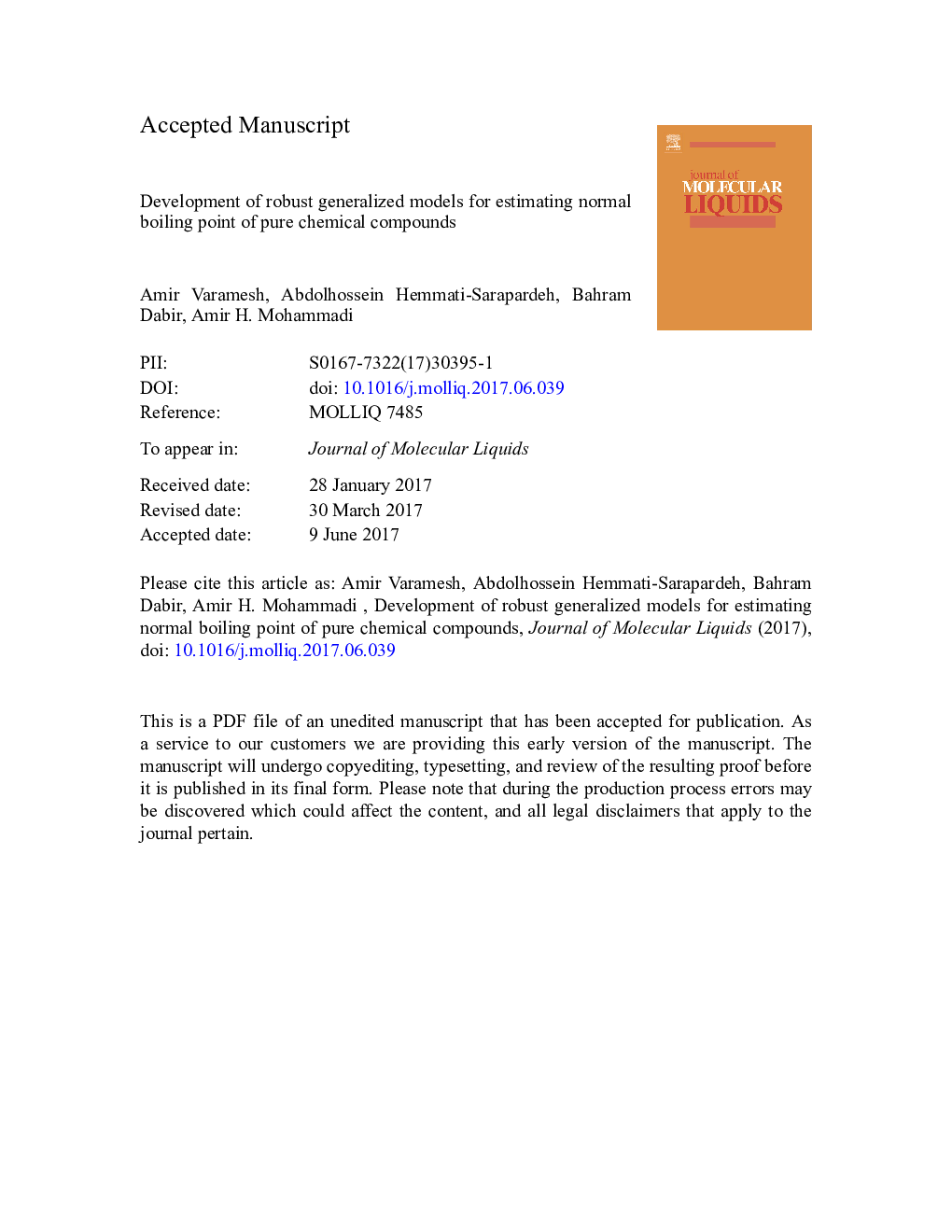| Article ID | Journal | Published Year | Pages | File Type |
|---|---|---|---|---|
| 5408404 | Journal of Molecular Liquids | 2017 | 41 Pages |
Abstract
In this communication, four different generalized methods have been developed to estimate the normal boiling points of pure chemical compounds by using multilayer perceptron (MLP) and radial basis function (RBF) neural networks, least square support vector machine (LSSVM) and group method of data handling (GMDH). In order to develop the models, experimental data of 563 pure compounds were gathered from literature sources. The collected data includes data points from 13 different groups including: paraffins; cycloparaffins; monooleffins and dioleffins; cyclooleffins and actylens; benzene derivatives; condensed ring aromatics and derivatives; acids, alcohols, and phenols and aldehydes; amines and nitrogen containing compounds; esters; ethers, ketones; halogenated hydrocarbons; and sulfur containing hydrocarbons. The prediction results using the proposed models are compared to three of the previously developed methods for estimating the normal boiling point using statistical and graphical error analyses. Comparisons show that all of the proposed models are more reliable and accurate than the available methods. Average absolute percent relative errors of the proposed MLP, RBF, LSSVM and GMDH are 3.41%, 2.65%, and 3.11% and 3.78%, respectively. The developed method based on RBF is selected as the most accurate predictive model, while the GMDH model has the advantage of estimating normal boiling point through a simple mathematical correlation without any need to computers. To find out the outliers and applicability domain of the proposed models and prove that our models are statistically valid, Leverage approach was used. The results indicate that only small percent of the experimental dataset are located out of the applicability domain of the developed models.
Keywords
Related Topics
Physical Sciences and Engineering
Chemistry
Physical and Theoretical Chemistry
Authors
Amir Varamesh, Abdolhossein Hemmati-Sarapardeh, Bahram Dabir, Amir H. Mohammadi,
